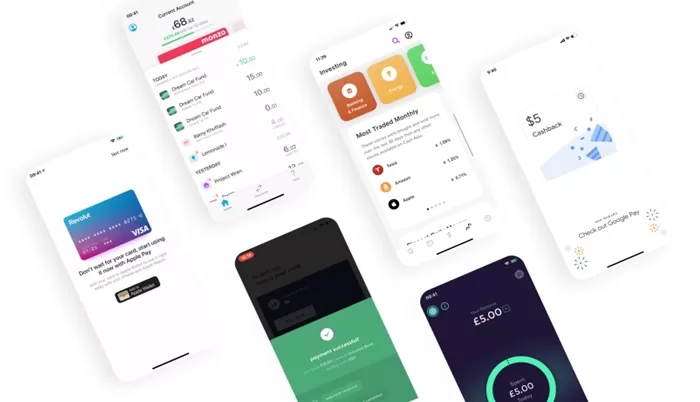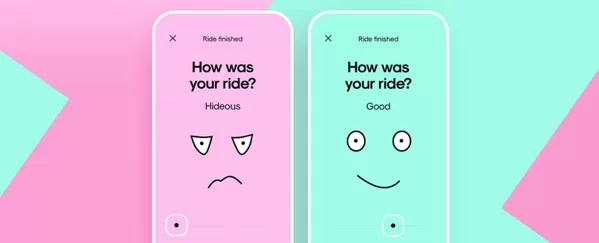Technology
How to Enhance Your Product with Emotional UI/UX Design

We all know that a great product needs a great user experience (UX) to go with it. But what about emotional design? Can that take your product from good to great? The answer is yes, and in this post, we’re going to show you how.
What is emotional UI/UX design?
Emotional UI/UX design is the use of psychology and other emotional cues to create a more engaging user experience. This may include using color, sound, visuals, or other elements to appeal directly to users’ emotions.
Why is emotional design important for products?
One of the key reasons that emotional design is so important for products is that it helps to create a more memorable experience. Users are more likely to remember and talk about a product that makes them feel good, rather than a product that feels bland or unappealing.
Another key benefit of emotional design is that it can help you connect with your users on a deeper level. By understanding what types of emotions your users are experiencing and responding to those emotions in the right way, you can build a more meaningful connection with them.
How can you use emotional design in your product?
There are many different ways that you can incorporate emotional design into your product. Some possible strategies include using color psychology to create an engaging visual theme, incorporating sound and music that appeals to users’ emotions, or using animations and visual cues to draw users’ attention and elicit certain feelings.
How to create an emotionally engaging user experience
It is a bit of an art, but with careful planning and attention to the needs and desires of your users, you can create a product that people love. Start by doing research into what types of emotions your users experience when using similar products, and then use that knowledge to craft an emotional design strategy that resonates with them.
And remember it is important to test your design and iterate as you go so that you can continually refine and improve your product. With the right approach, you can create a product that truly connects with users on an emotional level, making them more likely to engage with and love your brand.
There is another way, you can pay to SaaS UX design agency for professional help. They will have the expertise and experience to create an emotionally engaging user experience that goes beyond using colors or sounds and taps directly into users’ subconscious minds. Whether you need guidance in choosing the right design elements or want help with implementing and testing your design, a good UX agency can help you achieve your goals and create a truly successful product. So if you are serious about creating an emotionally engaging user experience, consider working with a professional design agency today!
Examples of companies that have done emotional UI/UX design well
Many companies have successfully incorporated emotional design into their products, including Apple, Amazon, and Netflix.
For example, Apple is known for its use of color in product design, choosing colors that evoke specific emotions like joy or excitement. This helps to create a more engaging experience for users and makes them more likely to engage with and remember the Apple brand.
Similarly, Amazon uses a combination of product features, visuals, and sound design to create a highly emotional experience for users. Their use of dynamic product imagery and attention-grabbing visual cues like flash sales or product recommendations helps keep users engaged and connected with the Amazon brand.
Another great example of behavior-emotional design is Notion, a productivity tool that has become popular in recent years. Notion puts a strong focus on visuals, using animated elements and unique color schemes to capture users’ attention and create an engaging experience.
And finally, Netflix is known for using clever animations and visual cues to keep users engaged and entertained while they browse and watch content. Whether it’s an amusing loading screen or pop-up notification, or a fun animation that plays when you complete an action on the site, Netflix is always looking for ways to connect with users emotionally and make their experience more enjoyable.
Overall, these are just a few examples of companies that have implemented emotional design in their products and reaped benefits as a result. Whether you are just starting or are looking for ways to improve your existing product, incorporating emotional design into your UI/UX can help you create a more engaging and memorable experience for users that keeps them coming back again and again.
Tips for implementing emotional UI/UX in your product
We gathered some tips and best practices to help you get started with incorporating emotional design into your product:
- Start by doing research into what types of emotional experiences your users tend to have when using similar products or services. This can include looking at reviews, surveys, or interviews with your target audience.
- Once you have a good understanding of the emotions that are most relevant to your product, develop a design strategy that incorporates these elements. This might include incorporating certain colors or sounds, using animations or dynamic visuals, or leveraging other design elements that engage users on an emotional level.
- To further test and refine your design strategy, consider implementing a beta version of your product and testing it with real users. This can help you identify any issues or areas for improvement so that you can make necessary changes and create a more effective product.
- Finally, consider partnering with a professional design agency to help you implement emotional UI/UX in your product. These agencies will have the expertise and experience needed to develop a successful product that engages users on an emotional level and helps achieve your business goals.
- Keep in mind that emotional design is a continuous process, and you should continue to seek feedback and refine your strategy as needed. By focusing on creating an engaging and memorable user experience, you can help set your product apart from the competition and build relationships with customers that last over time.

source: loonars.com
The benefits of emotional UI/UX design
There are many, including:
- Increased engagement and satisfaction from users. By creating a more engaging and enjoyable user experience, emotional UI/UX design helps keep users engaged with your product for longer periods, which can ultimately lead to increased conversion or retention rates.
- Higher brand loyalty and customer engagement. By tapping into users’ emotions and creating a more personalized experience, emotional UI/UX design can help build stronger connections between users and your brand, which can lead to increased loyalty over time.
- Improved user acquisition and retention rates. By focusing on creating a more engaging user experience that leverages users’ emotions, you can improve the overall customer journey and make it easier for users to find and use your product, as well as stay loyal to it over time.
Conclusion
At the end of the day, emotional design is an effective way to create a more engaging and memorable user experience. Whether you are just starting or looking for ways to improve your existing product, incorporating emotional UI/UX into your design strategy can help you deliver better results and drive long-term success.

























































